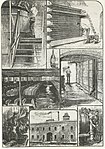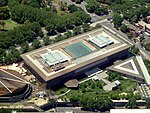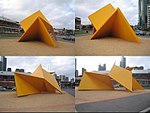Melbourne Recital Centre

Melbourne Recital Centre is a venue for live music in Melbourne and welcomes over 200,000 visitors each year. The organisation programs and presents more than 500 concerts and events a year across diverse range of musical genres including classical and chamber, contemporary, pop, folk, rock, electronica, indie, jazz, cabaret and world music. It was opened in 2009, as part of the Melbourne Recital Centre and Melbourne Theatre Company Southbank Theatre complex designed by Ashton Raggat McDougall, and is located on the corner of Southbank Boulevard and Sturt Street in the Melbourne Arts Precinct, Southbank. It is Melbourne's second largest auditorium for classical music (after Hamer Hall in Arts Centre Melbourne).
Excerpt from the Wikipedia article Melbourne Recital Centre (License: CC BY-SA 3.0, Authors, Images).Melbourne Recital Centre
Sturt Street, Melbourne Southbank
Geographical coordinates (GPS) Address External links Nearby Places Show on map
Geographical coordinates (GPS)
| Latitude | Longitude |
|---|---|
| N -37.8241203 ° | E 144.9678665 ° |
Address
Melbourne Recital Centre
Sturt Street
3006 Melbourne, Southbank
Victoria, Australia
Open on Google Maps







